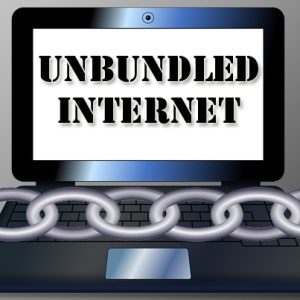 I made a big decision the other day: I’m breaking up with cable TV.
I made a big decision the other day: I’m breaking up with cable TV.
When I move into my new apartment in August, I am parting ways with MTV, HBO, and CNN. And I’m not alone—more and more people are choosing to forego cable in lieu of Netflix, Hulu, and….reading?
But there was one slight hiccup. It seems impossible these days to purchase high-speed cable Internet without also buying cable TV and telephone as part of a package—something called “bundling.”
Now, bundling can have its advantages. Companies can often offer you a lower rate on services if you buy them together. And if you’re already going to purchase all the items in question, it seems like a slam dunk, right?
Not always. While bundling is sometimes a good deal, it can also be a money-loser, depending on the package and your individual cable/Internet needs. And for folks like me, who just want one part of the bundle, you can end up paying way more on your monthly bill for services you don’t use.
Luckily, companies do offer unbundled Internet, but it takes a little research to figure out which plan is right for you. Here are the 3 things you need to do when buying unbundled cable Internet:
1.) Read the fine print
While unpackaged Internet can seem like a great deal, many plans come with hidden fees and stipulations. Look out for expensive activation fees, exit fees, and, most importantly, promotional fees.
For example, take Comcast’s $19.99 Economy Plus plan. Seems like a great deal, right? It is—until after six months, when you get rolled onto a $34.99 plan for the same service. Many Internet companies also require you to bundle Internet service with phone service. It is often still cheaper than combining with cable, but the cost of phone service is not always included on the advertised price. Take for example, AT&T’s Internet plans. On its website, the Elite plan is advertised for $14.95. But the company also requires you to purchase phone service for $20 per month—making your total $34.95.
2.) Figure out your need for speed
It’s important to consider what your Internet needs are and then choose an appropriate speed for your plan. After all, buying a cheap plan won’t matter if you can’t get the service you’re expecting. Cable Internet download speeds range from 1 megabyte per second (MBPS) to 1 gigabyte per second (GBPS). If you are just doing simple tasks on the Internet, like reading your email or surfing the web, you likely don’t need more than 3 mbps downloading speed. However, if you plan to watch videos or play games, you’ll probably need higher speeds. Additionally, the more people in your house, the higher speed—or bandwidth—you’ll need. For help determining your usage, visit the FCC’s Household Broadband Guide. Remember cable companies have an incentive to tell you that you need more speed is really necessary.
3.) Consider DSL
DSL—a “Digital Subscriber Line”—is another form of high-speed Internet, but it is transmitted through a telephone line rather than cable (you can still use your phone to make calls while you’re online, though, because the service runs on a different frequency). Speeds on the whole are lower than with cable, but the cost for service is often cheaper. If you only use the Internet for web browsing, email, and other basic services, DSL might be the way to go.
If you live in Chicago, we offer this simple chart as a starting point to compare different Internet options in the city. Keep in mind, plans and prices change often and vary by location, so check with the company for the most up-to-date offers. Also, most plans are only in place for 12 months, so make sure to find out what your rate will be after the first year.


